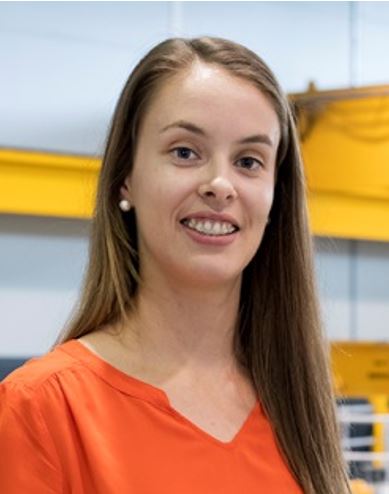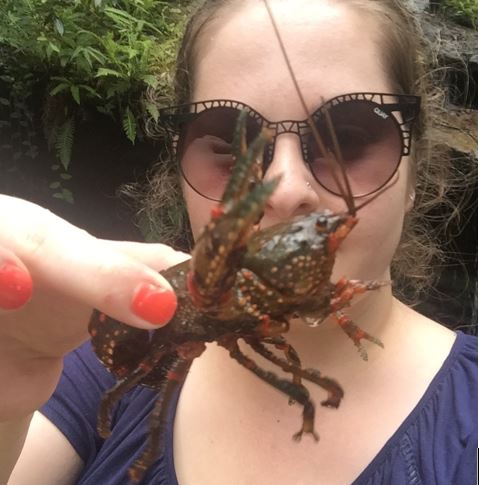Royal Society of NSW News & Events
1260th OGM and open lecture
Royal Society of NSW Scholarship Award Winners for 2018
Grace Causer, Institute for Superconducting and Electronic Materials, University of Wollongong
Yu-wei Lin, Advanced Drug Delivery Group, Faculty of Pharmacy, University of Sydney
Cara Van Der Wal, School of Life and Environmental Sciences, University of Sydney
Wednesday 7 February 2018
Union, University and Schools Club, 25 Bent Street, Sydney
Royal Society of NSW Scholarships
The Royal Society of New South Wales Scholarships recognise outstanding achievements by individuals working towards a research degree in a science-related field within New South Wales or the Australian Capital Territory. Each year three scholarships of $500 plus and a complimentary year of membership of the Society are awarded. The award winners give talks about their research at the first OGM and Public Lecture each year.

“Uncovering hidden nanoscale worlds
with neutrons”
Grace Causer
University of Wollongong and
Australian Nuclear Science and Technology
Organisation
For decades, neutrons have been used to probe almost all kinds of matter to unveil hidden characteristics, such as, the dynamics of chemical reactions, the performance of engineering components under strain, and the properties of low-dimensional systems. By reflecting polarised neutrons off layered structures, scientists have been able to gain unique insights into magnetic surfaces and ultra-thin films. Fundamentally, scientific insights gained from neutron scattering have been, and will continue to be, important for the development of future thin-film-based technologies. For example, giant magnetoresistive structures, for which Albert Fert and Peter Gruenberg won the 2007 Nobel Prize in Physics, have revolutionised computer technology. In this talk, In her talk Grace discussed a number of prototype thin-film devices which she has investigated as part of her PhD research. Specifically, the interface physics of an exemplar high-density magnetic recording device formed by ion-beam irradiation, and a magnetic thin-film sensor designed to act as a safety switch in next-generation vehicles powered by hydrogen, will be discussed.
****

“Developing new ways to treat ‘superbugs’
using old antibiotics: Are we there yet?”
Yu-wei (Wayne) Lin
Advanced Drug Delivery Group
Faculty of Pharmacy
University of Sydney
Antimicrobial resistance is one of the greatest threats to human health globally. Multidrug-resistant (MDR) Pseudomonas aeruginosa is at the top of the 2017 World Health Organisation Priority Pathogen List that requires the utmost need for novel antibiotics. MDR P. aeruginosa often causes life-threatening lung infections particularly in immune-compromised patients such as those with cystic fibrosis. As no novel classes of antibiotics will be available for many years to come, polymyxins, a class of ‘old’ antibiotics, are being increasingly used as a last-line therapy for lung infections caused by MDR P. aeruginosa. Over the last decade, inhalation of polymyxins has become a complementary practice for treating life-threatening lung infections. Notably, currently used inhalational dosage regimens of polymyxins are empirical, and this is likely a cause for the increased polymyxin resistance. Yu-wei described the overarching theme of his PhD research, which is to investigate the pharmacokinetics/pharmacodynamics/toxicodynamics of inhaled polymyxins, to maximise antimicrobial efficacy while minimising toxicity and emergence of resistance.
****

“Reconstructing the phylogeny and evolutionary
history of mantis shrimps using molecular data”
Cara Van Der Wal
School of Life and Environmental Sciences
University of Sydney
Mantis shrimps (Crustacea: Stomatopoda) are ecologically and often economically significant crustaceans, being dominant predators in many coastal ecosystems and serving as an important fisheries resource. They are a highly specialised rather than highly diversified lineage, with highly modified hunting appendages and sophisticated vision. Despite these unique attributes much remains unknown about stomatopod systematics, evolution and phylogeny. To fill this knowledge gap, I used molecular sequence data to estimate the phylogeny and evolutionary timescale of the group. Her research results show that Stomatopoda appeared in the Carboniferous and that the specialised spearing appendage evolved prior to the specialised smashing appendage. Additionally, the results showed that morphological complexity within stomatopod eyes has reduced independently in different lineages, and that this reduction might be linked to the environment. The results have significantly added to the knowledge of stomatopod evolution and diversification, suggesting systematic revisions may be required.

